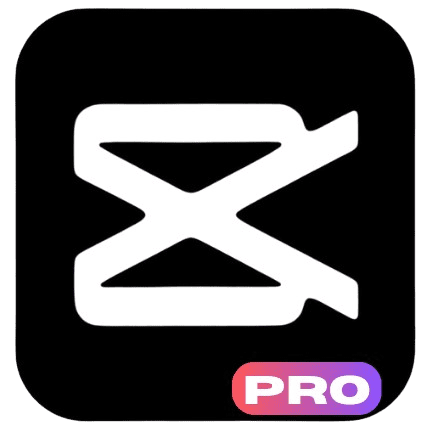In today’s digital world, intellectual property (IP) is one of the most valuable assets a business or creator can have. Whether you’re a tech startup, a small business, or an artist, protecting your intellectual property online is crucial. When asking How To Protect Your Intellectual Property Online From Infringement, it’s important to understand the risks involved and the tools available to defend your work. Online platforms are often rife with IP theft, so it’s essential to take steps to ensure your intellectual property remains safe from infringement.
The internet makes it easier than ever for people to copy and distribute content without permission. From images and videos to software and trademarks, online infringement is a constant threat. If you’re wondering How To Protect Your Intellectual Property Online From Infringement, it starts with knowledge of your rights and understanding the proper legal tools to shield your creations. The process may seem overwhelming, but with the right approach, it is manageable and essential for preserving your hard work and ideas.
In this article, we will cover the steps you can take to protect your intellectual property online, how to prevent infringement, and what legal options are available to you. Understanding How To Protect Your Intellectual Property Online From Infringement is crucial for anyone who produces original content or owns valuable ideas. With the right strategies, you can guard your work against theft and misuse on the internet.
How Can I Protect My Intellectual Property Online?
The first step in How To Protect Your Intellectual Property Online From Infringement is understanding what intellectual property you have. This includes copyrights, trademarks, patents, and trade secrets. Each type of IP offers different protections, and knowing which one applies to your work is key. Copyrights protect original works like music, art, and written content. Trademarks protect brand names and logos, while patents protect inventions and trade secrets protect business methods or formulas.
Once you identify your intellectual property, the next step is registering it. Registering your work with the appropriate government agency gives you legal standing in case of infringement. For example, registering your copyright with the U.S. Copyright Office provides a public record of your work and allows you to file a lawsuit if someone uses your content without permission. Similarly, registering a trademark with the United States Patent and Trademark Office (USPTO) provides exclusive rights to your brand name or logo.
In addition to registration, it’s important to monitor the internet for potential infringement. This can be done manually by searching for your IP online, or through automated tools like Google Alerts or third-party services that track the use of your work across various platforms. If you find that someone has infringed on your intellectual property, taking quick action is important. The next section will explore how you can prevent such infringements.
How Can We Prevent Infringement of Intellectual Property?
Preventing infringement is an essential part of How To Protect Your Intellectual Property Online From Infringement. While it may not be possible to eliminate all risks, there are steps you can take to reduce the likelihood of your intellectual property being copied or misused.
One key step is to include clear copyright notices and terms of use on your website, social media profiles, and any digital content you produce. A copyright notice serves as a reminder to others that the work is protected and that unauthorized use is prohibited. This can help deter infringement, as people are less likely to steal content if they know it’s being legally protected.
Another way to prevent infringement is by using digital watermarks. These are subtle marks embedded into your digital media that can prove ownership. For example, if someone uses your image or video without permission, the watermark can serve as proof that the content belongs to you. Although watermarks can sometimes be removed or altered, they still provide a layer of protection, especially when combined with other preventive measures.
Additionally, you can leverage the DMCA (Digital Millennium Copyright Act) takedown process. This is an effective tool for removing infringing content from websites or social media platforms. If you find someone using your work without permission, you can file a DMCA takedown notice with the platform hosting the content, which will force them to remove it. This is a quick and efficient way to protect your online content.
What Are the 4 Ways to Protect Intellectual Property?
When it comes to How To Protect Your Intellectual Property Online From Infringement, there are four primary ways to safeguard your creations:
1. Registration: As discussed earlier, registering your intellectual property, whether it’s a copyright, trademark, or patent, is the first and most important step. Registration provides you with legal documentation that proves ownership, which is essential in any potential legal disputes.
2. Licensing: Licensing your intellectual property gives others permission to use it under specific terms. This is a way to monetize your work while maintaining control over how it’s used. For example, you might license a logo to be used on merchandise, but you can set the terms to prevent misuse. Proper licensing agreements also offer legal protection in case of violations.
3. Non-Disclosure Agreements (NDAs): If you’re sharing your intellectual property with employees, partners, or contractors, consider using NDAs. These legal agreements prevent others from disclosing, using, or sharing your IP without permission. NDAs are especially important for businesses working on new products, ideas, or technologies.
4. Monitoring: Consistent monitoring of the internet for unauthorized use of your intellectual property is crucial. Many tools and services are available to track how your IP is being used online. By catching infringements early, you can take prompt action to stop unauthorized use before it becomes widespread.
Together, these four steps form a comprehensive strategy for protecting your intellectual property online.
How Can We Protect Intellectual Property in Digital Media?
Protecting intellectual property in digital media is a significant concern when asking How To Protect Your Intellectual Property Online From Infringement. Digital media, including images, music, video, and software, are particularly vulnerable to unauthorized use, as they can be easily copied, shared, and distributed.
One effective way to protect your digital content is by embedding metadata, which includes information like the author’s name, copyright date, and ownership details. Metadata can be added to images, videos, and audio files, making it harder for infringers to claim ownership of the work. While metadata can be stripped in some cases, it’s still an effective first line of defense.
Another crucial step is to use encryption or password protection for sensitive digital content. This prevents unauthorized users from accessing your content unless they have the proper credentials. For instance, online courses or digital products can be encrypted to ensure that only paying customers can access the material.
You can also consider using Content ID systems if you are a content creator on platforms like YouTube. These systems automatically identify and manage copyrighted content on the platform, allowing you to monetize or block infringing videos. Although not foolproof, they can save time by automating the detection of copyright violations.
How to Protect Digital Copyrighted Content?

Protecting digital copyrighted content is vital in the online world. As content becomes more accessible and easier to distribute, it’s essential to know How To Protect Your Intellectual Property Online From Infringement. There are several tools and strategies available to protect your digital work.
One key method is using digital rights management (DRM) technology. DRM helps control how your digital content is accessed, copied, or distributed. Many online platforms use DRM to protect digital books, music, movies, and software. By applying DRM to your digital content, you can limit how it’s used and prevent unauthorized copying or sharing.
Another approach is to monitor the use of your digital content. Regularly search for unauthorized copies of your work online. This can be done manually, but there are also services that can automate the process for you, making it easier to spot infringement early. If you find an infringement, you can take action using tools like DMCA takedowns or legal notices.
Lastly, licensing your copyrighted digital content ensures that anyone who uses it does so under agreed-upon terms. Whether you’re selling digital art or software, licensing agreements protect your rights while also allowing you to earn income from your work.
Who Owns IP Created by AI?
As artificial intelligence continues to evolve, one of the biggest questions in intellectual property law is, Who owns IP created by AI? AI-generated content, like art, music, or even inventions, poses a challenge when it comes to ownership. In most cases, intellectual property laws require that a human be credited as the creator. Currently, AI cannot be credited as an owner of IP, as the legal system recognizes only human creators.
For businesses and individuals using AI to create content, it’s important to clarify ownership in any agreements with AI developers or software providers. In many cases, the creator of the AI system or the user of the AI tool may own the rights to the content it generates, but this must be outlined clearly in the terms of service or contracts.
As AI technology continues to advance, the question of who owns AI-generated IP may require future legal changes. For now, businesses should ensure they understand the terms of use surrounding AI tools and be prepared to clarify ownership rights as needed.
Conclusion
In conclusion, protecting your intellectual property online from infringement is essential in today’s digital age. By understanding How To Protect Your Intellectual Property Online From Infringement, you can take proactive steps to safeguard your creations. From registering your IP to using legal tools like DMCA takedowns and licensing agreements, there are many ways to protect your intellectual property.
By combining legal protections, technology, and regular monitoring, you can reduce the risk of infringement and take quick action when necessary. Whether you’re a small business owner, an artist, or a tech innovator, protecting your intellectual property should be a top priority.


